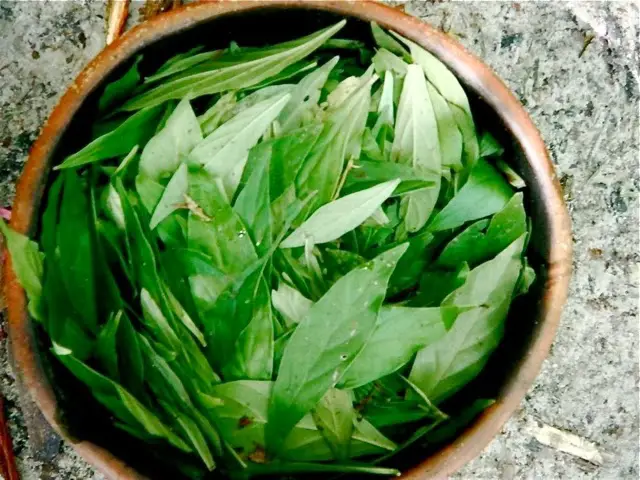

| Online: | |
| Visits: | |
| Stories: |

| Story Views | |
| Now: | |
| Last Hour: | |
| Last 24 Hours: | |
| Total: | |
The Science of Ayahuasca
Follow TIS on Twitter: @Truth_is_Scary & Like TIS of Facebook- facebook.com/TruthisScary

Guest writer for Wake Up World
A plant native to the Amazonian jungles has been used by the indigenous population for generations untold for physical, spiritual and emotional health. Now, modern science is beginning to prove its efficacy.
If you’re interested in alternative medicine and deep spiritual work, you’ve probably caught wind of a powerful purification rite called Ayahuasca. This ancient word is Quechua in origin and refers both to an Amazonian healing ceremony and also the sacred beverage that is consumed during it.
The jungle brew is used by tribes in the Amazon Rainforest to heal the body, mind, and spirit. A medicine man or woman will “prescribe” a ceremony to aid in treating a variety of ailments, from psychological / emotional to the purely physical.
Ayahuasca has made headlines in recent months for its psychedelic properties which induce visions, as well as its purgative properties which cause many to expel liquids and solids from their bodies – a ritual detoxification of sorts. Many Westerners have begun to seek it out in hope of ridding themselves of limiting beliefs, letting go of the past, and moving on from negative imprints left from troubled periods of their lives. Others are desperately seeking an alternative treatment for chronic illnesses like MS, diabetes, Parkinson’s and cancer.
Recently, a number of personal healing stories are beginning to surface that, if true, are very promising indicators of Ayahuasca’s curative potential.
But how does this jungle brew work? It’s one thing to experience the benefits, but it’s another to figure out what actually transpired to heal us, or at least got us going in the right direction again.
Here’s an inside look at how Ayahuasca affects the human organism.
The Spirit Molecule
First of all, Ayahuasca is made from two main jungle plants: the actual Ayahuasca vine, or Banisteriopsis caapi, and the leaves of another plant, usually called Chacruna, or Psychotria viridis. The Chacruna contains a substance called Dimethyltryptamine (DMT), which is the chemical that induces hallucinations. We naturally have small amounts of this in our bodies, and it exists in most green leafy vegetables. When taken by itself, nothing really happens, because the Monoamino Oxidase (MAO) enzymes that live in our gut naturally break down the DMT before it ever gets into our blood stream.
However, the Ayahuasca plant contains beta-carboline alkaloids including harmine, harmaline, and tetrahydroharmine that block the MAO enzymes from doing their job, and essentially keep the DMT active. This allows it to cross the blood-brain barrier after it’s ingested, and once that happens, the countdown to an altered state of reality has begun. Once the DMT reaches the receptors in your brain, the neurons begin to fire.
Activating and Reconnecting the Brain
When the effects of Ayahuasca start to take hold, multiple areas of the brain are triggered. It activates the amygdala, which holds early emotional memories, usually traumatic ones. It also activates the neo-cortex, associated with our perception and ability to reason and make decisions. For those who have experienced this sacred potion that many called “Grandma”, it probably comes as no surprise that it also activates the insular cortex, which plays a major role in awareness and consciousness.
Unlike psychedelic experiences with other substances, in which a person may not know what’s happening while they are under the influence, participants in an Ayahuasca ceremony are generally very alert and aware of what they are experiencing. The combination of this heightened awareness and fingertip access to emotional and sometimes long-forgotten memories allows an individual to begin “the deep work”. Everything can be processed through a new lens, often times without any re-traumatization, and with an expanded capacity for mindfulness and empathy.
We also know that Ayahuasca has a calming or quieting effect on a group of interacting regions of the brain known as the Default Mode Network (DMN). When this complex system is too active, symptoms include anxiety or depression. Meditation has been show to work with the DMN in the same way to counteract those symptoms, and as we know, there’s plenty of scientific research and study on the benefits of meditation.
Binding Agent: The Cellular Link to Diseases
Another important aspect of Ayahuasca is how it works to manage stress at the cellular level, specifically with the Sigma-1R receptor – a protein that binds to DMT. Found in the brain and organs including the heart, lungs and liver, as well as the immune system in general, it helps other proteins to align into their proper shapes. Many diseases are associated with proteins like this that don’t work properly, and malfunctioning Sigma-1R is linked to depression, Alzheimer’s, addiction, cancer, Parkinson’s and traumatic brain injuries.
Source: http://truthisscary.com/2016/11/the-science-of-ayahuasca/


